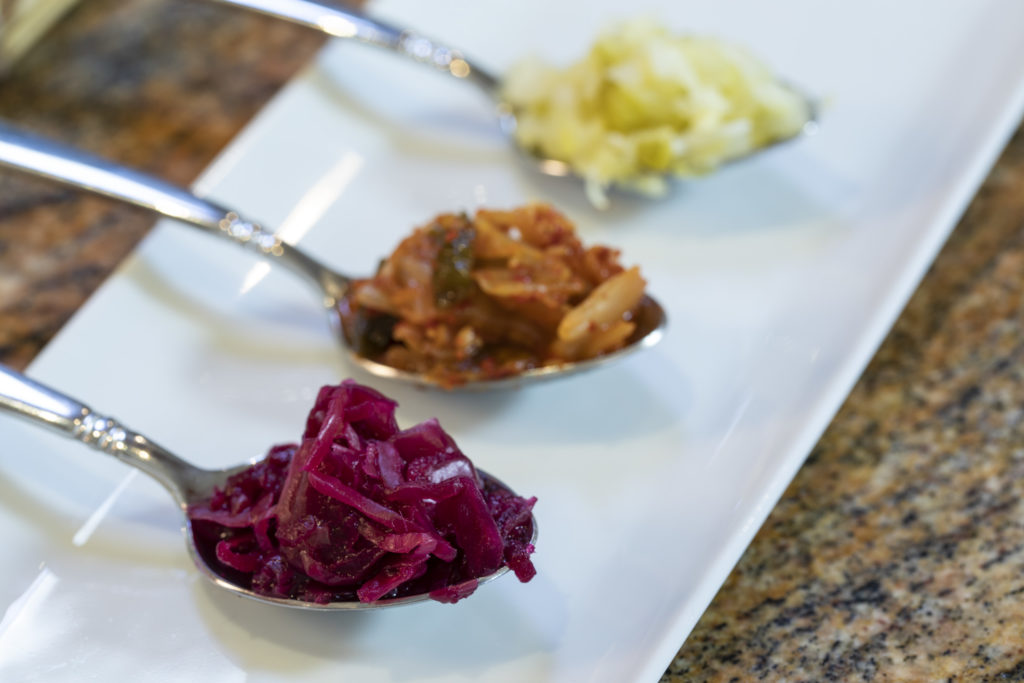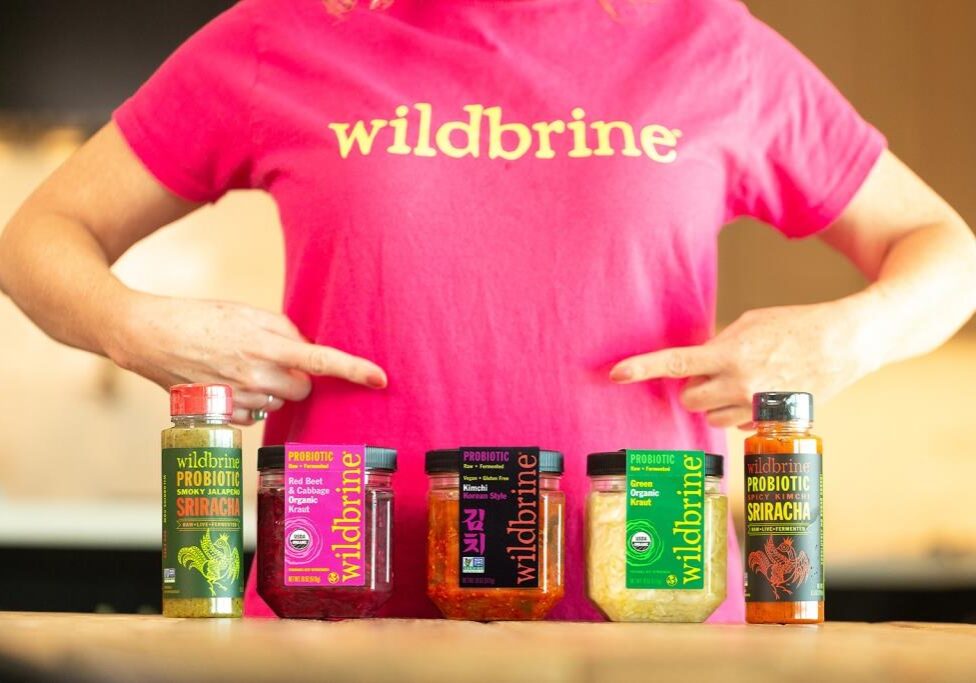While fermented foods like kimchi and sauerkraut have been dietary staples in cultures around the world for centuries, scientists have only recently been discovering their crucial role in supporting human health.
The microbes that ferment food improve their nutritional value through changes they cause in the foods and through compounds they produce as they make those changes. They also support and often become part of the microbes that live in our gut.
Over the past 20 years, science has identified this conglomeration of microorganisms that live in healthy human intestines, called it “the microbiome,” and discovered that it’s closely tied to our own bodies’ health-promoting mechanisms. For instance, the microbiome takes apart our food into its constituent nutrients, which it then feeds us through the intestinal walls. These gut microbes also produce a range of vitamins and health-promoting compounds themselves—as a sort of bonus benefit.
It’s been discovered that the microbiome is connected to our brain through the vagus nerve. A study in Frontiers of Psychiatry for March 13, 2018, reported, “The vagus nerve oversees a vast array of crucial bodily functions, including control of mood, immune response, digestion, and heart rate. It establishes one of the connections between the brain and the gastrointestinal tract.” So, your “gut feeling” can be trusted: it may not always be perfectly correct, but it doesn’t lie.
Exploring Fermented Foods and Inflammation
Research on the microbiome gets more granular with each passing year. A 2021 study from Stanford University, published in the journal Cell, reveals that eating a variety of fermented foods reduces inflammation in the body, while eating a high-fiber diet of fruits, vegetables, beans, whole grains, and nuts does not. Inflammation damages arteries, organs, and joints. Left unchecked, it can contribute to chronic diseases, such as heart disease, blood vessel disease, diabetes, obesity, cancer, Alzheimer’s disease, and many other maladies.
The Stanford researchers split a group of 36 healthy adults into two groups. One was instructed to eat plenty of sauerkraut and kimchi –foods like wildbrine’s products that are teeming with living beneficial microbes– for 10 weeks. The second group was assigned a diet of unfermented fiber-rich plant foods. During the 10 weeks of the study, researchers tracked the markers of inflammation in the subjects’ blood and any changes in their microbiomes. At the end of the 10 weeks, neither group showed significant changes in their immune system’s health. But, reports Anahad O’Connor in The New York Times for August 13, 2021, “the fermented food group showed marked reductions in 19 inflammatory compounds, including interleukin-6, an inflammatory protein that tends to be elevated in diseases such as Type 2 diabetes and rheumatoid arthritis. The high-fiber group, in contrast, did not show an overall decrease in the same inflammatory compounds.”

But something else important was going on in the fermented food group. Their microbiome became more diverse. And the more fermented food that people ate, the greater the number of microbial species that bloomed in their guts, and the more species, the greater the health-promoting diversity in the microbiome. Yet only five percent of the new microbes that were detected appeared to come directly from the fermented foods they ate. “The vast majority came from somewhere else, and we don’t know where,” said Justin Sonnenburg, one of the study’s authors and a Stanford microbiologist. He speculated to the Times that either heretofore undetectable levels of microbes bloomed in the guts of those eating a lot of fermented foods, or the microbes in the fermented foods did something that allowed lots of new microbes to join the intestinal party.
Most nutritional experts agree that a high-fiber diet is beneficial to human health, so the Stanford scientists assumed that their high-fiber group would show a big impact on the composition of their microbiomes. But their high-fiber group showed few changes in microbial diversity.
Then they looked closer and discovered that those high-fiber subjects who started out with higher levels of microbial diversity had reductions in inflammation while those with the least diversity had an increase in inflammation when they ate more fiber. The researchers hypothesized that those with low microbiome diversity may have lacked the necessary microbes to digest all the fiber they were eating. Another of the Stanford researchers thought that maybe this is why some people experience bloating and other gastrointestinal problems when they eat a lot of fiber.
This poses a question that the Stanford team hopes to answer in the future. What would happen if people simultaneously ate more fermented food as well as more fiber? Would that create a more diverse microbiome that is better able to digest more fiber? Would that curb inflammation even more?
Wildbrine fermented vegetable products like kimchi and sauerkraut already contain high levels of fiber and an abundance of beneficial microbes. The Stanford team should test our customers’ levels of inflammatory suppression. They might find some pleasant surprises.
About the Author: Sonoma County resident Jeff Cox is the author of 24 books, including The Essential Book of Fermentation (Avery, 2013)
